Salvadoran Food Dishes: Basic Overview
Common Ingredients
Common Cooking Methods
Courses
Meals
Key Taste
Eating Etiquette
Meal Presentation
Culinary Festivals
Influence and Fusion
Popular Types of Salvadoran Dishes
-
Soups
Salvadoran soups are a rich tapestry of local cuisine, characterized by their hearty and aromatic qualities.
They typically feature a variety of ingredients, such as fresh seafood, vegetables, and meats, simmered slowly to create deep, umami-rich broths.
-
Stews
In Salvadoran cuisine, stews are celebrated for their comforting and robust flavors, achieved through the slow cooking of meats in a rich, spice-infused sauce.
These stews, with their tender meat and flavorful sauce, embody the soulful and home-cooked essence that is central to Salvadoran family meals.
-
Fried dishes
Fried dishes in Salvadoran cuisine range from the crispy and golden exterior of street food favorites to the tender and juicy insides of marinated meats.
These dishes, including the popular yuca frita and carne asada, are a celebration of the vibrant street food scene.
-
Desserts
Desserts in Salvadoran cuisine feature ingredients like milk, rice, and tropical fruits.
From the creamy and comforting arroz con leche to the sweet and tangy elote loco, these desserts offer a variety of flavors and textures.
Salvadoran dishes are famous culinary creations enjoyed in El Salvador, a country nestled in Central America. This cuisine is shaped by indigenous cuisine, Spanish delicacies, and African culinary gems.
Central to Salvadoran cuisine is the prominence of corn, beans, and squash, often referred to as the “three sisters” in Mesoamerican cultures.
These are complemented by a variety of meats, particularly poultry and pork, and a bounty of tropical fruits like mango, papaya, and pineapple.
Seafood also plays a significant role in the coastal areas, with dishes like pescado frito (fried fish) and ceviche (fresh seafood cured in lime juice).
The primary flavors of Salvadoran cuisine are a balance of savory, sweet, and tangy flavors, often achieved through the use of ingredients like lime, tamarind, and achiote.
Cooking methods vary from grilling and frying to steaming, often in plantain leaves, which infuses the food with a distinctive aroma and flavor.
Beyond the food itself, Salvadoran cuisine is characterized by its communal and celebratory nature, with meals often serving as a focal point for gathering and sharing among family and friends.
Let’s dive into the heart of El Salvador’s culinary world! I’ll share the top dishes from this vibrant country, explore the essence of traditional Salvadoran cuisine, and reveal how it gained global fame.
You can also look at what makes these dishes so nutritious, the various influences that mold the cuisine, the dining customs, and the perfect food and drink pairings. Ready to start this flavorful journey?
38 Popular Salvadoran Dishes with Filters
Here are 38 of El Salvador’s most famous dishes, sorted by their global popularity. Dive into a world of flavors by filtering based on ingredients, tastes, cooking techniques, types of dishes, and when they’re typically enjoyed.
From cherished traditional recipes and national favorites to fusion culinary blends, street eats, and unique exotic treats, there’s something for everyone.
Pupusa
- National
- Street Food
- Traditional
Pupusa, the national dish of El Salvador, is a thick, handmade corn tortilla filled with a blend of ingredients such as cheese, cooked pork (chicharrón), refried beans, or a combination of these, known as “revuelta”.
Pupusas have tasty variations, including Pupusa de Queso (cheese), Pupusa de Loroco (a native flower), and Pupusa de Ayote (squash), each offering a unique taste profile from savory to slightly floral or sweet.
The taste of a pupusa is comforting, with a harmonious blend of the savory filling and the slightly tangy, corn-based exterior. Pupusas are so integral to Salvadoran culture that they have their own festival, “Día Nacional de la Pupusa”, celebrated every second Sunday in November.
This dish has transcended borders, becoming popular in other Central American countries and among expatriate communities in the United States.
Tamale
- Street Food
- Traditional
Tamale, known in some regions as “tamal”, is a traditional Mesoamerican dish made of masa or dough (starchy, and usually corn-based), which is steamed in a corn husk or banana leaf.
The Salvadoran version often contains fillings like chicken, pork, or beans, and is distinguished by its inclusion of potatoes, bell peppers, and sometimes olives.
Salvadoran tamales are known for their moist, soft texture and rich, savory taste, often accompanied by a subtle blend of spices and the slight sweetness of the corn dough.
The Salvadoran tamal is particularly notable during the Christmas season and other festive occasions, serving as a comfort food that brings families together.
Ceviche
- Exotic
- Street Food
- Traditional
Ceviche, also known as cebiche, seviche, or sebiche, is a traditional Salvadoran dish made with fresh seafood marinated in lime juice, which ‘cooks’ the seafood without heat. It often includes shrimp, fish, or both, mixed with onions, tomatoes, and cilantro for added flavor and texture.
Celebrated during festivities and coastal celebrations, ceviche is a popular dish in El Salvador and other Latin American countries, known for its tangy taste and ability to unite people over delicious food.
Carne Guisada
- Traditional
Carne guisada, a beloved traditional dish of Salvadoran cuisine, presents a comforting stew made from tender, slow-cooked meat that’s immersed in a rich, flavor-packed sauce. The dish is celebrated for its deep, umami-rich taste, with hints of earthy spices that warm the soul.
Carne guisada has also found a place in the hearts and kitchens of people in other Latin American countries and among Latinx communities in the United States.
Carne Asada
- Street Food
Carne asada stands as a quintessential street food in Salvadoran culture features marinated, grilled meat, often skirt or flank steak, that’s cooked over an open flame to achieve a perfect char and smokiness.
The meat is then thinly sliced and typically served with a side of fresh, zesty accompaniments like salsa, avocado, or tortillas.
While it’s a common sight at local celebrations and weekend markets in El Salvador, Carne Asada’s appeal crosses borders, being widely cherished across the Americas, especially in Mexico and the Southwestern United States.
Salpicón
- Traditional
Salpicón is a Salvadoran salad that is primarily made of finely chopped cooked beef, which is mixed with a colorful medley of fresh vegetables, herbs, and sometimes, a touch of citrus to brighten the flavors.
The taste of Salpicón is a harmonious blend of savory meat with the crisp, juicy freshness of the vegetables. It’s commonly enjoyed during the warmer months, serving as a light yet satisfying meal.
The dish’s popularity isn’t confined to El Salvador; variations of Salpicón can be found in other Central American countries and Mexico.
Panes Rellenos
- Street Food
Panes rellenos is affectionately known as the Salvadoran take on the submarine sandwich.
This satisfying sandwich is crafted with specially made bread, similar to a baguette but softer, which is generously stuffed with flavorful, tender shredded chicken or turkey that’s been simmered in a rich, tomato-based sauce.
The filling is often adorned with additions like cucumbers, radishes, lettuce, and sometimes the tangy kick of Salvadoran curtido (a type of lightly fermented cabbage slaw).
Its popularity extends beyond Salvadoran borders, with variations found in Honduran and Guatemalan street food scenes, where it continues to be a crowd-pleaser.
Yuca Frita
- Street Food
Yuca frita is a beloved street food dish in Salvadoran cuisine, consisting of deep-fried cassava root. The exterior becomes irresistibly crispy, while the inside remains tender and fluffy, resembling French fries but with a sweeter, more nuanced flavor.
Yuca frita is often served with a side of curtido (a type of lightly fermented cabbage slaw) and salsa roja (a mild tomato sauce), providing a delightful contrast of textures and tastes.
The dish’s simplicity belies its depth of flavor, making it a popular snack or side across El Salvador and in other Central American countries, as well as in Salvadoran communities abroad.
Yuca con Chicharrón
- Street Food
- Traditional
Yuca con chicharrón pairs the soft, comforting texture of boiled yuca with the salty crunch of chicharrón, which are fried pork belly or pork rinds.
This dish is a traditional staple, representing a harmonious blend of flavors and textures, from the smooth, slightly sweet yuca to the rich, savory chicharrón.
This dish is typically complemented by curtido and salsa roja, adding layers of tangy and spicy to the dish. It is often enjoyed during family gatherings and local festivities.
Curtido
- Street Food
- Traditional
Curtido is a type of lightly fermented cabbage slaw, often featuring a tangy and slightly spicy flavor profile. This traditional Salvadoran dish is typically made with cabbage, carrots, and onions, marinated in vinegar and sometimes spiced with oregano and red chili peppers.
It’s the Salvadoran answer to coleslaw but with a kick, serving as a crunchy, refreshing accompaniment to a variety of dishes, most notably pupusas. The fermentation process adds a depth of flavor, making it a beloved staple in Salvadoran households.
Panes con Pavo
- Street Food
- Traditional
Panes con pavo, also known simply as Turkey sandwiches, is a cherished dish in Salvadoran cuisine, especially during the Christmas season.
This dish involves a flavorful, slow-cooked turkey that is seasoned with a blend of traditional Salvadoran spices, stuffed into a crusty bread roll, and often topped with curtido, tomato slices, and mayonnaise.
The turkey is so tender and aromatic that it melts in your mouth, while the spices impart a warm, inviting flavor that’s synonymous with festive celebrations.
Quesadilla Salvadoreña
- Street Food
- Traditional
Quesadilla salvadoreña is a rich, sweet cheese bread of Salvadoran cuisine. Unlike its savory Mexican counterpart, the Salvadoran quesadilla is a dessert or snack, relished for its sweet, creamy taste with a slightly crispy exterior.
This cake-like bread is often enjoyed in the morning with coffee or as an afternoon treat. It’s imbued with the flavor of Parmesan cheese, which can sound unusual, but it adds a delightful depth and contrasts beautifully with its sweetness.
Enchiladas Salvadoreñas
- Street Food
Enchiladas salvadoreñas consist of a crispy fried tortilla base, generously topped with a salad mixture of lettuce, boiled eggs, and sometimes beets, finished with ground beef, and curtido (a type of fermented cabbage).
This dish is a festival of flavors and textures, blending the savory taste of the meat with the fresh crunch of the vegetables, all complemented by the tanginess of the curtido. Enchiladas are particularly popular during street fairs and local celebrations.
Pastelitos
- Street Food
Pastelitos, a traditional street food in Salvadoran cuisine, are deep-fried pastries filled with a variety of ingredients, such as meat (commonly chicken or beef), potatoes, and sometimes vegetables.
They’re distinct from other Latin American pastries due to their unique, crisp texture and the addition of achiote (annatto), which gives them a characteristic yellowish-orange color.
The taste is savory, often accompanied by a tangy tomato sauce that adds a zesty flavor, making them irresistibly delicious and quite popular in neighboring Central American countries.
Empanadas de Frijol o Leche
- Street Food
- Traditional
Empanadas de frijol o leche, also simply known as Salvadoran empanadas, is a traditional dish in Salvadoran cuisine that can swing from sweet to savory depending on the filling.
The savory version is filled with beans (frijoles), creating a hearty and comforting taste, often enjoyed as a snack or a light meal. On the sweeter side, empanadas filled with milk custard (leche) are a delight, offering a creamy, sweet flavor that’s hard to resist.
These milk-filled empanadas are particularly popular during Easter and other festive occasions. Besides El Salvador, these empanadas have found popularity in other Latin American countries, adapting to local tastes and preferences.
Tres Leches Cake
- Traditional
Tres leches cake is a traditional dessert in Salvadoran cuisine, beloved for its rich and moist texture. This delicacy is essentially a sponge cake soaked in a harmonious blend of three types of milk: evaporated milk, condensed milk, and heavy cream, or sometimes whole milk.
The result is a cake that’s incredibly moist, sweet, and creamy, often topped with whipped cream or meringue to add a light, airy contrast.
Tres Leches Cake is a festive favorite, commonly served at celebrations such as birthdays and weddings, symbolizing indulgence and joy. Its popularity extends beyond El Salvador, capturing hearts in various parts of the Americas.
Mojarra Frita
- Traditional
Mojarra frita, a traditional dish in Salvadoran cuisine, is a whole fish, commonly tilapia or mojarra, that’s marinated, then deep-fried to perfection. The exterior is crispy and golden, while the inside remains tender and juicy.
Seasonings typically include lime, garlic, and a mix of herbs, which imbue the fish with a vibrant, tangy, and slightly aromatic flavor. Often served with a side of pickled vegetables, rice, or tortillas, it’s a meal that speaks to the soul of coastal Salvadoran cuisine.
Desayuno Típico
- Traditional
Desayuno típico is a hearty, traditional start to the day in El Salvador. This breakfast usually features a combination of eggs, often scrambled with vegetables (tomatoes and onions are favorites), refried beans, creamy Salvadoran cheese, sweet plantains, and tortillas or bread.
Avocado slices can also grace the plate, adding a creamy texture and rich flavor. The taste profile of a desayuno típico is a balance of savory, sweet, and earthy flavors.
Churrasco Típico
- Traditional
Churrasco típico is a term in Salvadoran cuisine that refers to a traditional style of grilled meat, often accompanied by a variety of side dishes.
Typically, the dish features grilled beef, seasoned with local spices and herbs, and served alongside chimol (a fresh tomato, onion, and cilantro salsa), grilled vegetables, tortillas, and sometimes rice or beans.
The taste of churrasco típico is robust and smoky, complemented by the fresh, tangy flavor of chimol. It’s a meal that’s both simple and complex, offering a sensory journey through textures and tastes.
Pescado Frito
- Traditional
Pescado frito is a traditional dish in Salvadoran that involves whole fish, commonly tilapia or red snapper, marinated in a blend of citrus and spices, then fried to golden perfection. The result is a crispy exterior with tender and flavorful flesh inside.
Pescado Frito is known for its savory taste with a hint of acidity, making it a refreshing meal, especially when accompanied by sides like fried plantains or a simple salad.
This dish enjoys popularity beyond El Salvador, particularly in Central America, where the love for fresh, fried fish is shared across borders.
Yuca Sancochada
- Traditional
Yuca sancochada, a staple in Salvadoran cuisine, consists of yuca (cassava) root boiled until tender, often served with curtido (a type of lightly fermented cabbage slaw), chicharrón (fried pork belly or pork rinds), or a simple yet flavorful tomato sauce.
The taste of yuca sancochada is mild and slightly sweet. It’s considered a traditional food that serves as a side dish or a base for more elaborate dishes.
Yuca sancochada is particularly popular during the Lenten season and Easter celebrations, where it’s enjoyed as part of meat-free meals.
Torrejas
- Street Food
- Traditional
Torrejas, often enjoyed during the Lent and Easter (Semana Santa) festivities, are a beloved traditional dessert in Salvadoran cuisine.
Similar to French toast, Torrejas are made by soaking bread in a mixture of eggs and milk, and then frying it to achieve a golden brown perfection.
However, what sets the Salvadoran version apart is the sweet syrup, made from panela (unrefined whole cane sugar), that’s poured over the fried bread, infusing it with flavors of cinnamon and other spices.
Arroz con Leche
- Traditional
Arroz con leche, translating to “rice with milk,” is a comforting, traditional dessert found not only in Salvador but across Latin America and Spain.
This dish is a creamy rice pudding made by slowly cooking rice in milk and sugar, often enriched with a sprinkle of cinnamon or a zest of lemon or lime to enhance its flavor.
The taste of arroz con leche is sweet, warm, and comforting, with variations that include the addition of raisins, vanilla, or even a hint of rum in some recipes.
Elote Loco
- Street Food
Elote loco, a vibrant and playful street food staple in Salvadoran cuisine, translates to “crazy corn.”
This dish takes the simple pleasure of grilled or boiled corn on the cob and elevates it with a slathering of mayonnaise, a generous sprinkle of hard cheese (similar to Cotija), and a dusting of chili powder.
The taste is a delightful mix of sweet, savory, creamy, and spicy, offering a true taste adventure. This dish has found fans beyond its borders, especially in other Central American countries and among communities in the United States.
Riguas
- Street Food
- Traditional
Riguas are cherished traditional Salvadoran thick corn cakes, often compared to tortillas, but are distinct in their preparation and flavor.
Made from freshly ground corn mixed with milk, riguas are typically cooked wrapped in banana leaves, which impart a subtle, earthy aroma to the dish.
They’re either savored plain, showcasing the sweet, natural flavor of corn, or accompanied by cheese or beans for added richness.
Sopa de Pescado
- Traditional
Sopa de pescado is a savory seafood soup that is a traditional dish within Salvadoran cuisine. This soup is rich in flavors, thanks to its base of fresh fish, commonly accompanied by vegetables like tomatoes, green peppers, onions, and herbs.
Sopa de Pescado is especially revered during the Holy Week (Semana Santa) festivities.
Sopa de Gallina India
- Traditional
Sopa de Gallina India, also recognized as Salvadoran hen soup, is a cherished dish, celebrated for its deep, home-cooked essence that warms the soul.
Made primarily from a free-range hen (known locally as “gallina india”), this soup is enriched with vegetables like carrots, potatoes, and chayote.
The addition of herbs and spices imbues it with a unique, slightly spicy, and comforting taste that is unmistakably Salvadoran.
This dish is often served at important gatherings and celebrations, such as family reunions and during the Christmas season.
Tamal Pisque
- Traditional
Tamal pisque is a traditional Salvadoran type of tamal that is distinct from others due to its primary ingredient, masa (corn dough), which is mixed with beans, creating a rich and hearty flavor profile without the inclusion of meat.
Typically, Tamal Pisque is savored during Lent and Holy Week, aligning with the period’s dietary restrictions and spiritual significance.
Gallo en Chicha
- Exotic
- Traditional
Gallo en chicha is essentially a rooster cooked in a fermented corn drink (chicha). It’s a rare and traditional Salvadoran delicacy, reserved for special occasions and celebrations.
The fermentation process of the chicha imparts a unique tangy and slightly sweet taste to the rooster.
Gallo en Chicha is particularly popular during patron saint festivals and other cultural celebrations, where community and tradition take center stage.
Sopa de Pata
- Traditional
Sopa de pata is a Salvadoran hearty soup comprising cow’s feet, tripe, yuca (cassava), corn, tomatoes, cabbage, and various Salvadoran spices. The taste is a unique blend of savory, slightly spicy, and deeply umami.
Sopa de pata is often associated with family gatherings and significant celebrations, making it a staple during festive times like the Salvadoran Festival of El Salvador del Mundo.
This soup is also popular among Salvadoran communities abroad, particularly in Central America and the United States, where it continues to be a comforting reminder of home.
Sancocho
- Traditional
Sancocho is a traditional stew known across various Latin American countries, including El Salvador. Sancocho can be considered a fusion of indigenous and Spanish influences.
This stew is typically made with a variety of meats, such as chicken, beef, or pork, and is enriched with a medley of vegetables like yuca, corn, and plantains.
In El Salvador, it’s often enjoyed as a comforting meal during family gatherings and on cooler days.
Sopa de Mondongo
- Traditional
Sopa de Mondongo, also cherished within Salvadoran cuisine, is a traditional soup that features slow-cooked tripe (the stomach lining of a cow) as its main ingredient.
This soup is a labor of love, simmering for hours with a harmonious blend of vegetables like carrots, chayote, and potatoes, alongside a rich mix of herbs and spices.
Sopa de Res
- Traditional
Sopa de res is a heartwarming and nourishing beef soup known for its rich and flavorful broth, which comes from slow-cooking beef along with a medley of vegetables such as carrots, yucca, cabbage, and corn.
The dish exudes a savory taste, often enhanced with fresh herbs and a squeeze of lime for a touch of acidity. Sopa de Res is a comforting embrace in a bowl, especially appreciated during the cooler months or as a weekend family meal.
Obleas
- Street Food
Obleas are Salvadoran thin, wafer-like snacks, commonly filled with sweetened condensed milk, jams, or dulce de leche. Obleas can be considered a fusion or street food delight, offering a crunchy texture that perfectly complements its sweet fillings.
The taste of obleas is sweet and satisfying. They are also especially popular in countries like Colombia and Venezuela, showcasing the dish’s broad appeal across regions
Nuégados
- Street Food
- Traditional
Nuégados are a traditional dessert in Salvadoran cuisine, often enjoyed during Easter celebrations and other festive occasions.
They consist of dough made from yuca (cassava) or corn, which is then deep-fried to golden perfection and drenched in a sweet, syrupy sauce made from panela (unrefined whole cane sugar).
Nuégados are sometimes accompanied by other traditional sweets like torrejas, further enhancing the festive spirit.
Marquesote
- Traditional
Marquesote stands as a traditional Salvadoran sponge cake known for its dense yet light texture. This cake is made using basic ingredients like flour, eggs, and sugar.
The taste of Marquesote is subtly sweet, often enjoyed with a cup of coffee or hot chocolate, making it a perfect treat for any time of the day.
Ensalada
- Traditional
Ensalada in Salvadoran cuisine refers to a refreshing and tangy cabbage salad, often served as an accompaniment to various dishes within the country.
Ensalada typically includes shredded cabbage, carrots, onions, and sometimes tomatoes, dressed with vinegar or lemon juice, giving it a sharp, invigorating flavor that complements the rich, savory dishes it often accompanies.
This salad is particularly popular during festive occasions and celebrations, such as Christmas and Easter, where it accompanies hearty meals in Salvadoran cuisine.
Pastel de Plátano
- Traditional
Pastel de Plátano is a Salvadoran cake that artfully layers ripe plantains with a filling typically made from red beans or sometimes meat, all topped with a creamy, savory sauce, and often sprinkled with mozzarella cheese which melts beautifully when baked.
The taste of Pastel de Platano is a harmonious blend of the natural sweetness of plantains contrasted with the rich, savory depth of its filling and the tanginess of the sauce.
It’s not uncommon to see this dish gracing tables during the holiday season, particularly around Christmas and New Year’s festivities.
What Influences Salvadoran Dishes?
A variety of factors deeply influences Salvadoran dishes, each contributing to the unique flavors and dishes of the region. Here’s how these influences come together:
Nex, let’s discover dining etiquette, where the fusion of cultures creates a distinctive set of manners at the Salvadoran table.
What Is Salvadoran Dining Etiquette?
Salvadoran dining etiquette emphasizes hospitality, respect, and community, reflecting the importance of shared meals in bringing people together. Here are some key aspects:
Do Salvadorans Eat With Their Hands?
In Salvadoran cuisine, eating with hands is traditional, especially with dishes like pupusas and yuca frita. While this practice enhances the dining experience for certain foods, utensils are used for other meals, depending on the setting and dish type.
It is also important to choose the right beverages to complement the robust flavors of Salvadoran dishes. So, move to the next section to make it clear.
Which Beverages Best Pair with Salvadoran Dishes?
The best beverages to complement Salvadoran dishes typically balance or enhance these flavors. Here are some traditional and popular choices:
When pairing El Salvador’s signature drinks with food, consider the balance of flavors in the meal and choose a drink that will either complement or contrast with those flavors in a pleasing way.
I hope you enjoy discovering the flavors of Salvadoran cuisine. If you get the chance to visit El Salvador, don’t hesitate to try these famous dishes. If you enjoyed this article, feel free to like and share it. Thank you for your time!



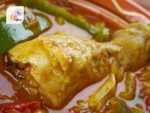
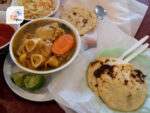
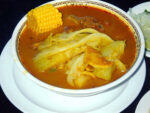
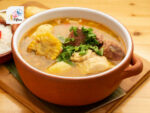
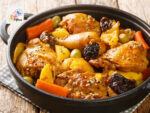
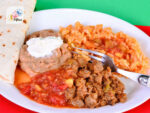
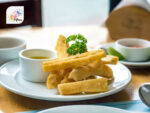
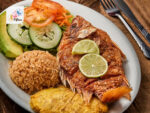
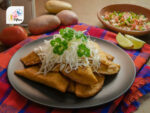
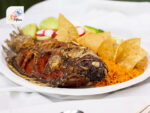

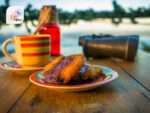

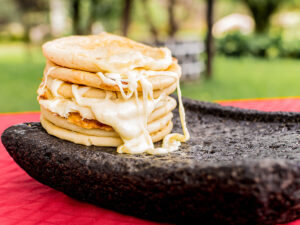
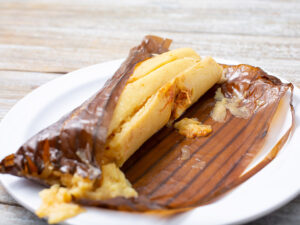
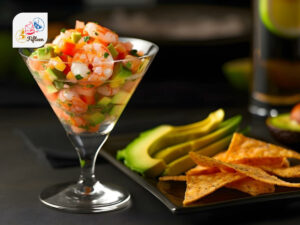
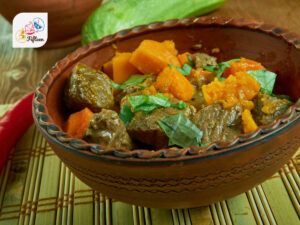
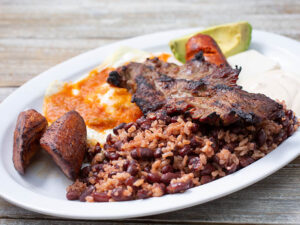
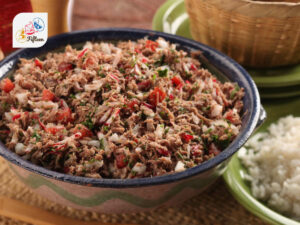
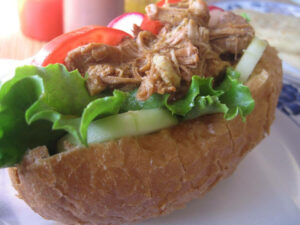
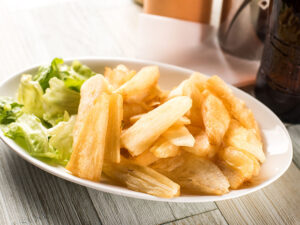
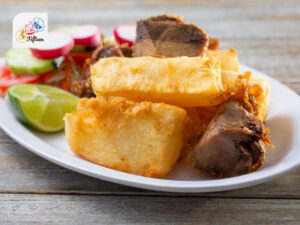
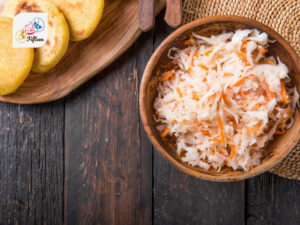
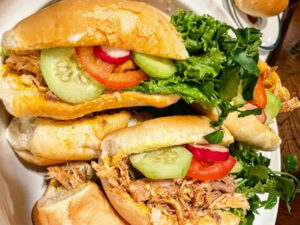
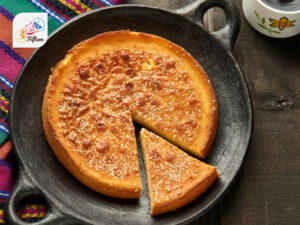
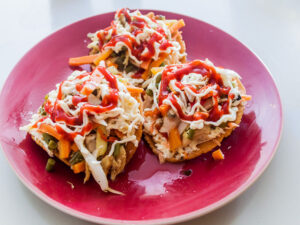
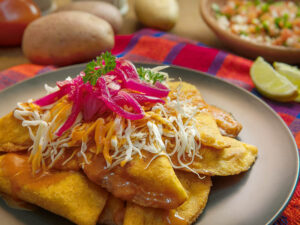
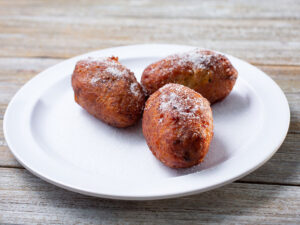
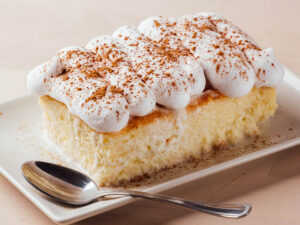
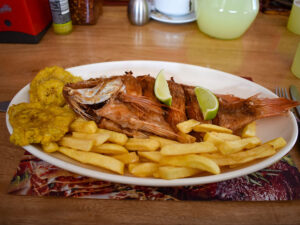
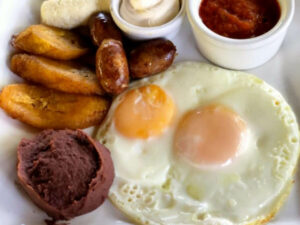
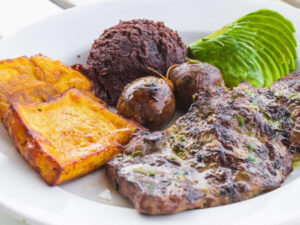
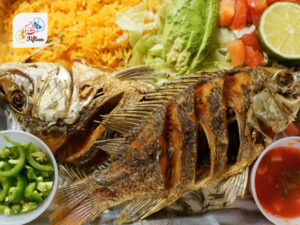
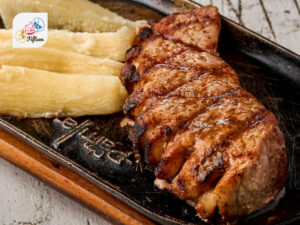
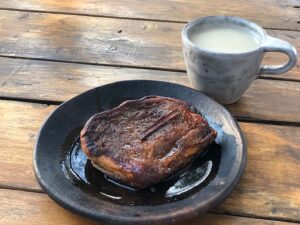
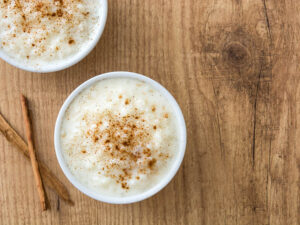

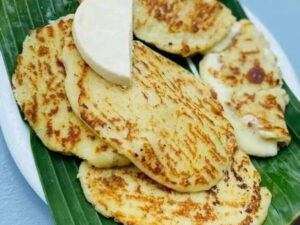
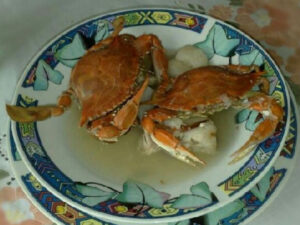
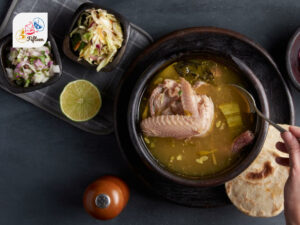
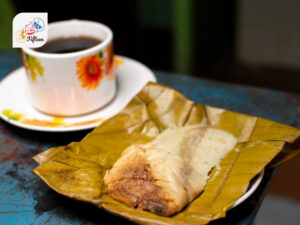
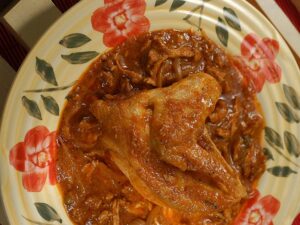
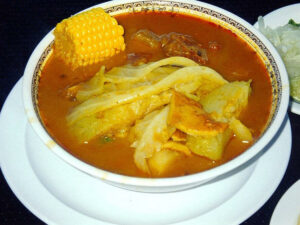
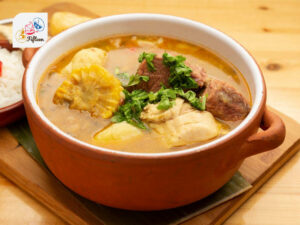
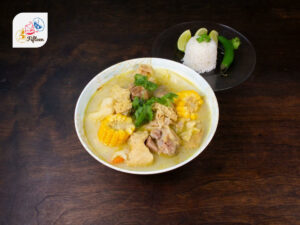
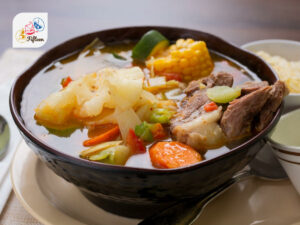
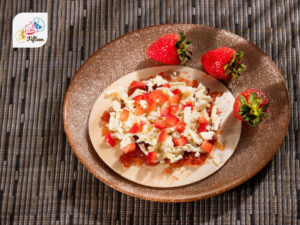
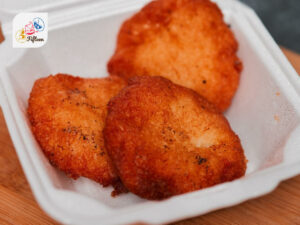
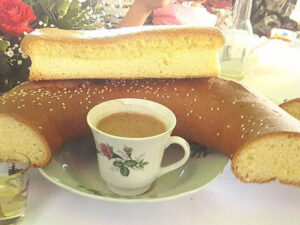
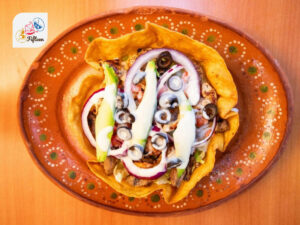
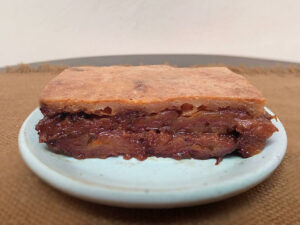
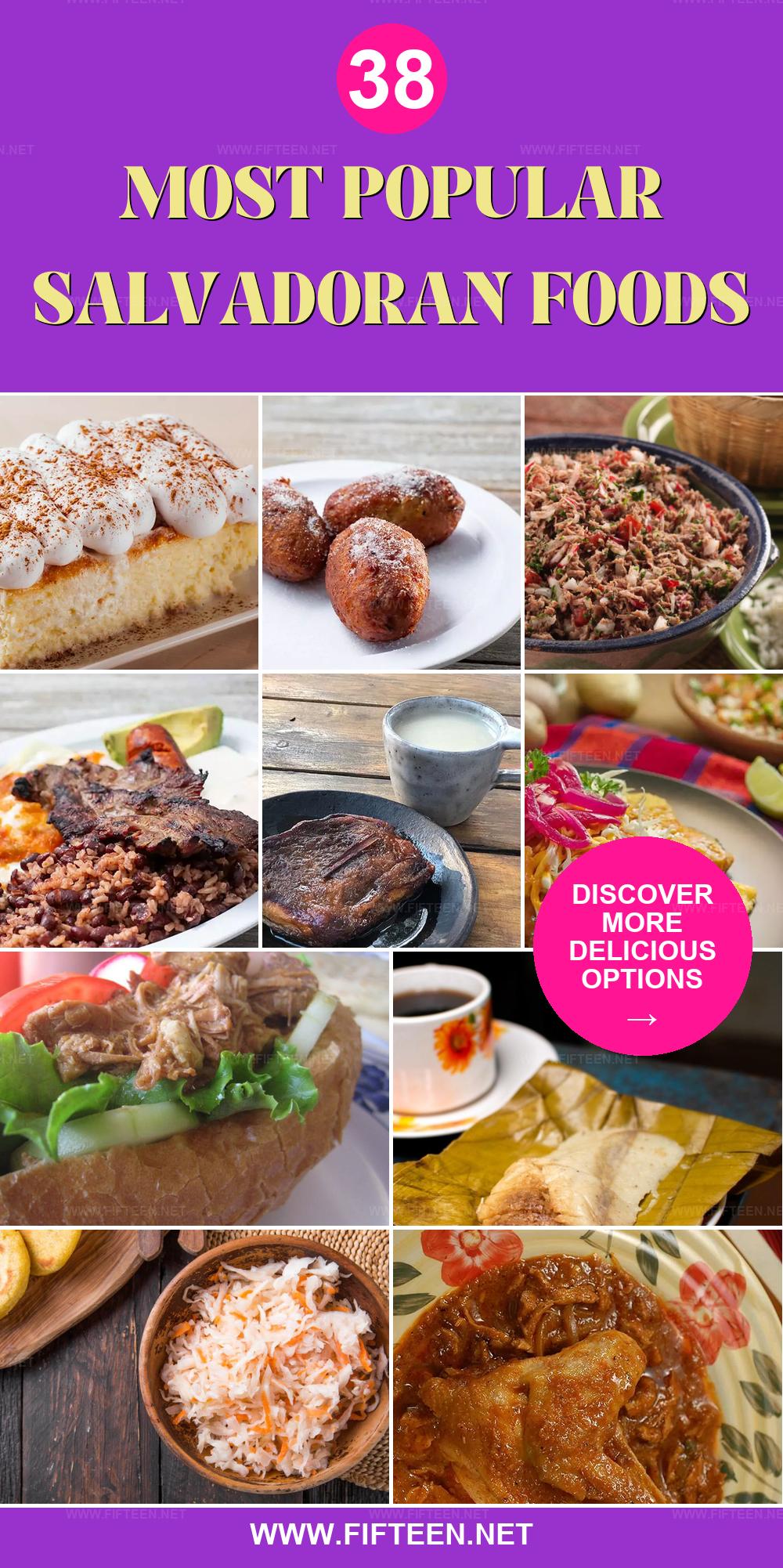
Jamie Scott
Editor in Chief, Senior Content Writer
Expertise
Home Cooking, Meal Planning, Recipe Development, Baking and Pastry, Food Editor, Cooking-video Maker, Western Food Evaluation Expert
Education
Le Cordon Bleu College of Culinary Arts
Local Community College, New York, NY
Jamie Scott is a skilled culinary expert and content creator specializing in Western cuisine. With over 15 years in the culinary field and formal training from Le Cordon Bleu, Paris, Jamie deeply understands how to blend nutrition with delicious flavors. His passion for cooking matches his commitment to making healthy eating accessible and enjoyable.
On Fifteen.net, Jamie brings a fresh perspective to classic dishes and beverages, offering readers insightful recipes, cooking tips, and a fresh view on meal planning that emphasizes taste, health, and simplicity.